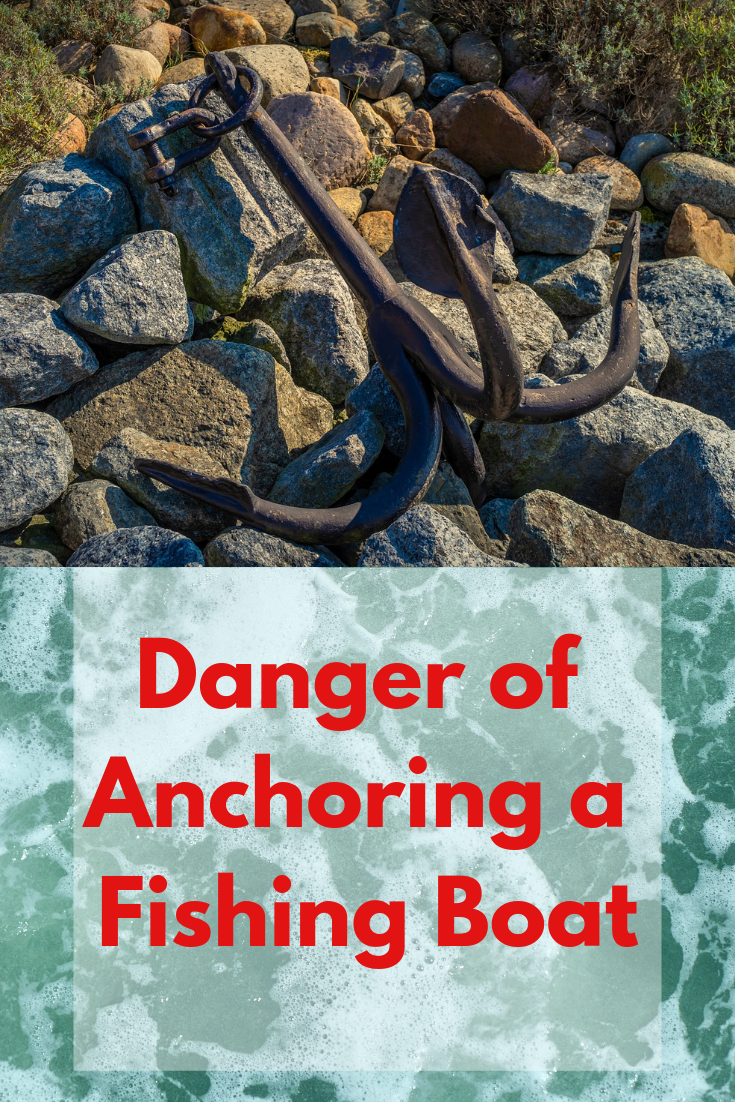What is the Major Danger of Anchoring a Fishing Boat from the Stern and How to Safely Anchor It

When it comes to any guidebook or any online help site about boating, one of the questions you will see right on the top of the FAQ section is “what is the major danger of anchoring a fishing boat from the stern?” If that’s what you are here to learn about today, then make sure you read our article as we not only talk about the dangers but also list the top tips on properly and safely anchoring your boat.
What is the Major Danger of Anchoring a Fishing Boat from the Stern?
There are countless reasons why you should not anchor the boat from the stern. Several boats are built and designed in a manner to present the bow of the boat to the wind and the seas.
By putting forward the pointy end of the boat towards the sea (and the possible oncoming storm), the boat will not only utilize the hull to endure less resistance but also can help deal with the winds that are oncoming. A broader stern can possibly create more resistance and thus put more strain on the gear.
Other factors should be considered too. Most boats have a broad entrance to the cabin, the end of the cabin has a flat surface and areas with doors or glass.
Moreover, most boats have open and large cockpits right at the stern, so boarding with high wind and other unfavorable conditions from this end can possibly cause serious problems.
Further, having a boat anchored by the stern would cause an increase in the risk of damage to the rudder, their shaft as well as the shaft logs. The possibility of the damage of the rudder could depend on several different aspects. This also includes the location of the rudder.
For instance, a spade rudder is considered to be one of the characteristics that are noted as being typical of boats and something that could benefit from being from the stern. Spade rudders are large, plain, flat and typically quite close to the transom. It is supported by only a single shaft where it pierces the bottom.
Having a short, steep chop that would slam into the rudder as the stern of the boat would rise and could possibly break it or, at the least, cause quite a bit of damage to its shaft log which would result in catastrophic leaking, ultimately leaving the anchor line snagged in the rudder.
Depending on the sea type in the harbor, the current as well as the configuration of the hull and the propeller’s location, there is an all-time risk of anchoring line being fouled on the prop which would result in causing a breach in the hull, that is if the line is not cut, to begin with. This would occur as the boat would plunge as it is being pulled forward as it responds to a wind shift all of a sudden.
As you see, that overall it is just a terrible idea to anchor your boat from the stern. Now, let us move on to discussing how to anchor your boat the right way.
Guide to Anchoring your Boat
- Always choose an area where there is a ton of room. It should ideally be an area that is well-protected and which has a right amount of depth of the water and preferably a muddy or sandy bottom.
- Very slowly, head into the current or the wind into a position that is either upwind or up current, where you want your boat to end up.
- Now, when you have reached that position, completely stop your boat and begin to lower your anchor to the bottom of the water. As mentioned earlier, do not anchor it from the stern.
- Slowly start beginning to back the boat either downwind or down current. You will need to let out approximately eight-ten times your anchor line as the water’s depth. This also depends on the wind, the wave size, and the strength. Tie the line off around a cleat of the bow and take the anchor line and pull on it to ensure that the anchor is all set.
- Once you are done anchoring, keep a close eye and check out for sightings of objects that are onshore or also the buoys that are present so that you will know where exactly you left your boat and where it is positioned. Also, constantly recheck the sighting to ensure that the boat’s anchor is grounded well and not being dragged.
- At certain intervals, check the connecting knots present on your anchor line. If and when possible, opt for splices because knots have the ability to weaken a line quicker.
Top Tips for Anchoring your Boat
- Ensure that you use a proper type of anchor; Danforth, Mushroom or Plow is preferred.
- Attach about three to six feet length of galvanized chain to the boat’s anchor as it will be a guard to the anchor against abrasions of rock, mud, and sand.
- Always opt for an area that offers your boat with maximum shelter from boat traffic, currents, and wind.
- Before anchoring, always determine the water’s depth as well as what kind of bottom it is, that is it should either be muddy or sandy.
- Do a proper calculation of the right amount of anchor line that is necessary. The general rule of thumb is that you need about five to seven times extra as per the depth of the water. However, this is the bare minimum. It is best that you opt for eight to ten times extra of the water’s depth when dropping your anchor.
- Never throw your anchor to the bottom as this will lead to the anchor possibly getting entangled. Always slowly drop it to the bottom.
- Once the anchor is set, always use reference points to ensure that your boat at no point is drifting away. Make sure to check these points as frequently as you can.
- Lastly, and for the nth time, never anchor your boat from the stern.
Conclusion
We hope this article gives you all the relevant information on what is the major danger of anchoring a fishing boat from the stern. Anchoring from the stern can cause the boat to swamp and cause a lot of damage to the boat. Ensure that you follow all the guidelines and the tips we have mentioned for safely anchoring your boat.


